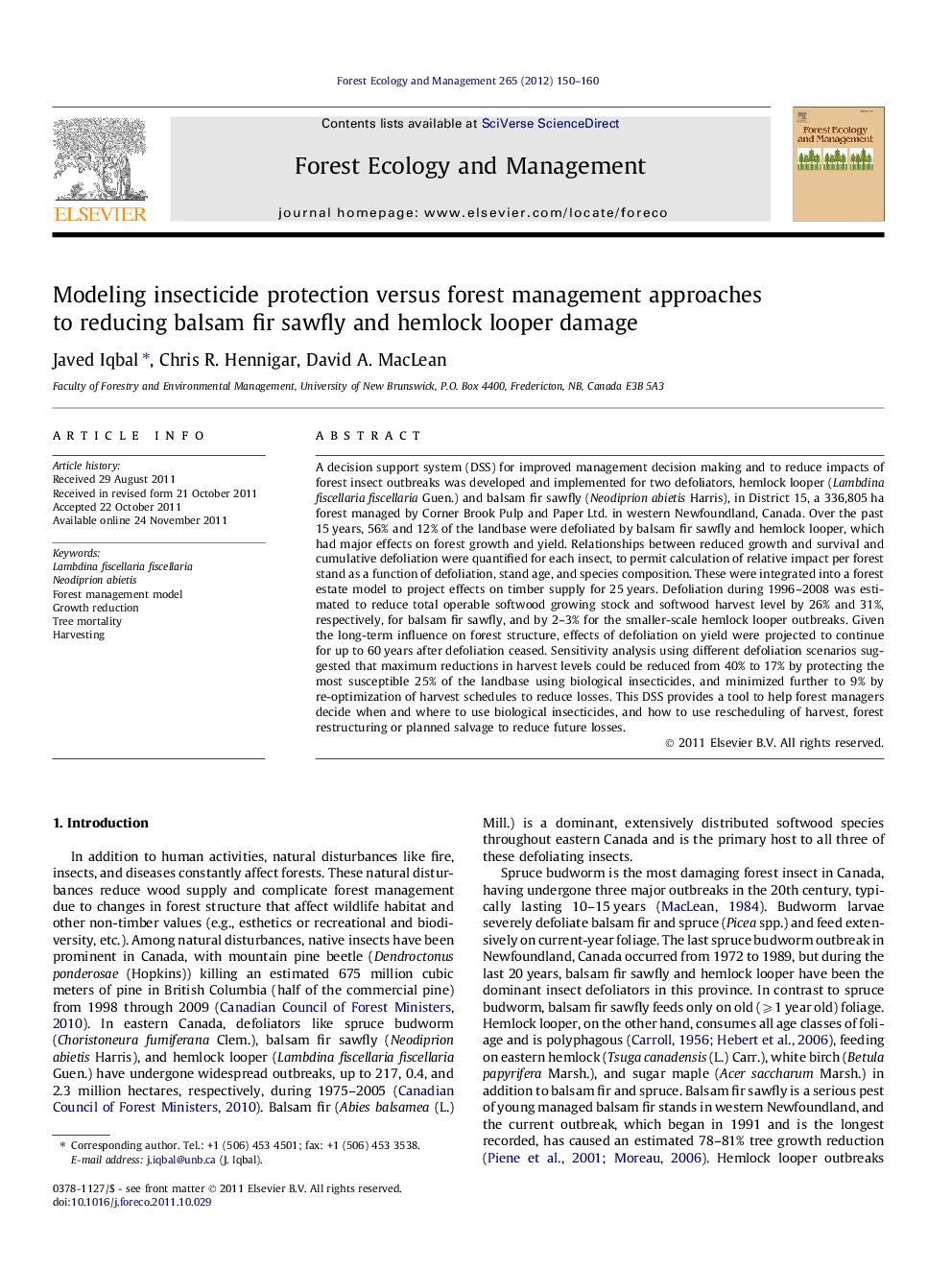| Article ID | Journal | Published Year | Pages | File Type |
|---|---|---|---|---|
| 87568 | Forest Ecology and Management | 2012 | 11 Pages |
A decision support system (DSS) for improved management decision making and to reduce impacts of forest insect outbreaks was developed and implemented for two defoliators, hemlock looper (Lambdina fiscellaria fiscellaria Guen.) and balsam fir sawfly (Neodiprion abietis Harris), in District 15, a 336,805 ha forest managed by Corner Brook Pulp and Paper Ltd. in western Newfoundland, Canada. Over the past 15 years, 56% and 12% of the landbase were defoliated by balsam fir sawfly and hemlock looper, which had major effects on forest growth and yield. Relationships between reduced growth and survival and cumulative defoliation were quantified for each insect, to permit calculation of relative impact per forest stand as a function of defoliation, stand age, and species composition. These were integrated into a forest estate model to project effects on timber supply for 25 years. Defoliation during 1996–2008 was estimated to reduce total operable softwood growing stock and softwood harvest level by 26% and 31%, respectively, for balsam fir sawfly, and by 2–3% for the smaller-scale hemlock looper outbreaks. Given the long-term influence on forest structure, effects of defoliation on yield were projected to continue for up to 60 years after defoliation ceased. Sensitivity analysis using different defoliation scenarios suggested that maximum reductions in harvest levels could be reduced from 40% to 17% by protecting the most susceptible 25% of the landbase using biological insecticides, and minimized further to 9% by re-optimization of harvest schedules to reduce losses. This DSS provides a tool to help forest managers decide when and where to use biological insecticides, and how to use rescheduling of harvest, forest restructuring or planned salvage to reduce future losses.
► Decision support systems (DSS) can be used by forest managers to reduce impacts of forest insect outbreaks. ► A DSS was developed and implemented for two economically important defoliators. ► Growth and survival impacts were integrated into a forest estate management model. ► Both biological insecticide protection and forest management can be used to reduce damage. ► Alternative selection depend on the type, severity, and extent of insect damage.
